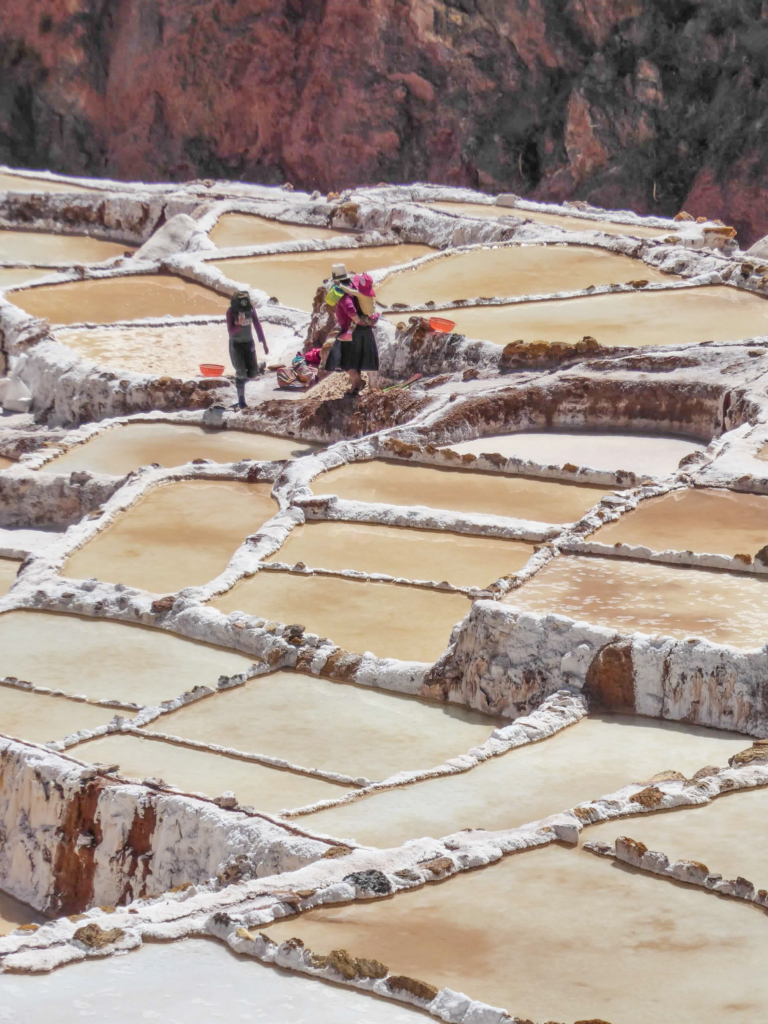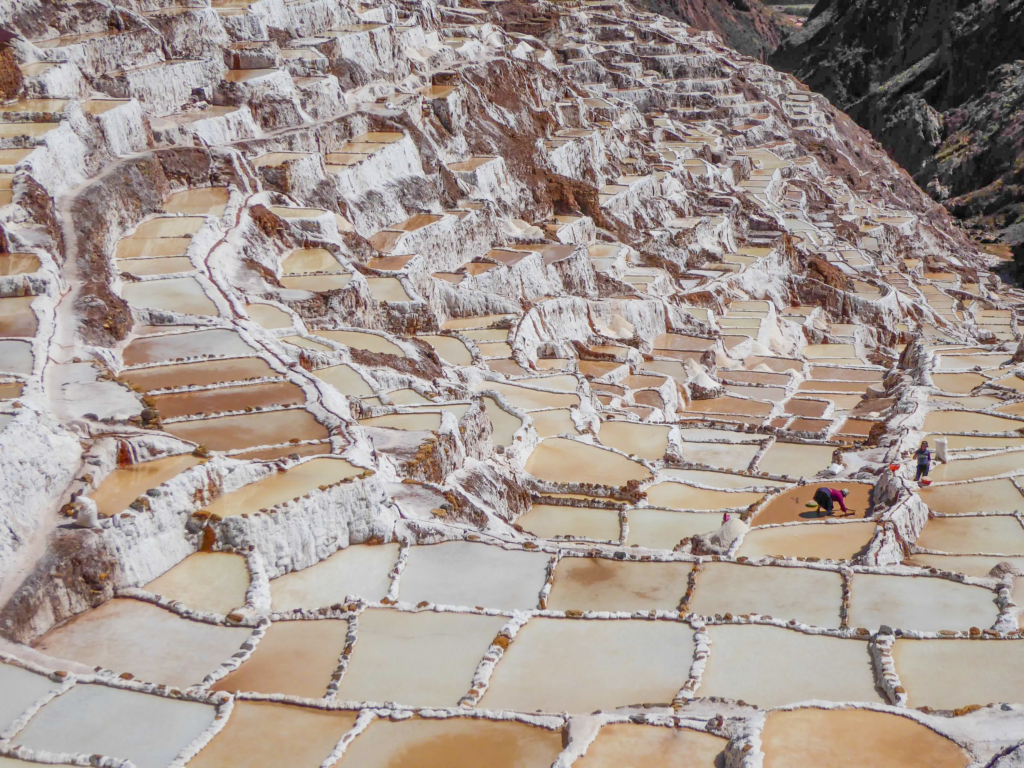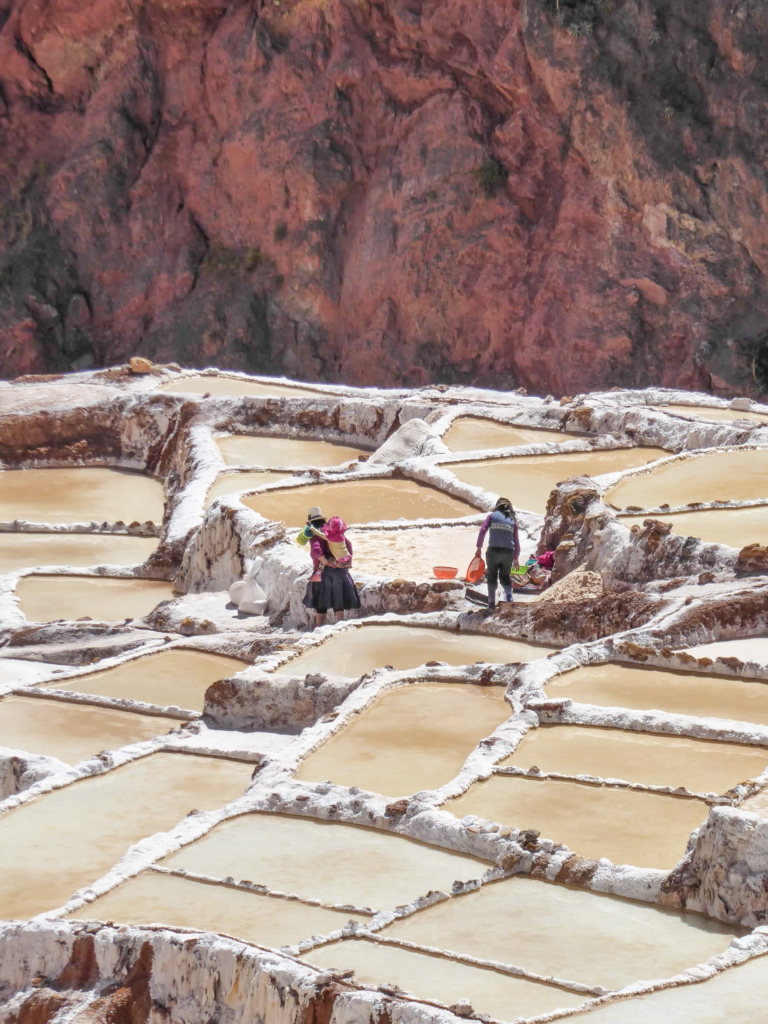We found ourselves traveling north out of Cusco into the Sacred Valley at approximately 11,000 feet above sea level to the awe-inspiring terraces of Maras. Just outside of the village of Urubamba we rounded a curve in a canyon descending to the Rio Vilcanto as we caught a glimpse of a swath of white along the mountainside and wondered if it was a stone quarry.
Upon closer inspection we realized we were seeing terraces completely covered in what appeared to be odd square shaped sizes (of approximately 54 square feet each). We learned that they were 5,000 salt pans each filled with salty water, fed by underground spring waters, in the process of high altitude sun evaporation. The salt pans were built between 200-900AD by the Chanapata culture which pre-dated the Incas and were not discovered until 1556 (by the Spanish).
A network of spring water canals feed the pans. The flow of the water is directed into an intricate system of tiny channels that allow the water to gradually flow onto the ancient terraced ponds. When the salt pan keepers need water they open a notch in the sidewall of their pan to allow the salty water to flood their pan. Once full, the water is turned off and the spring water is allowed to evaporate for several days leaving behind a pink salt crust. This process is repeated over a month’s time and at the end the arid Andean climate has helped to produce a mound of the pink salt which is harvested and collected into a sack.
The salt pans are owned and run by a community cooperative and only members of the community may work in the salt pans. Everything from the flow of water, maintenance of the side walls and water-entry notch, to who works which pan is monitored and controlled by the cooperative. It is believed that the cooperative system began during the time of the Incas. The pan size assigned to a family varies based on the size of the family. New members of the community locate an unused pan and inquire with the cooperative prior to learning how to properly keep the pond. Not surprisingly, newcomers tend to work the pans located on the furthest edges of the terraces.
Salt was important to ancient Peruvian cultures. Sal de Maras is renowned as one of the most nutritious salts due to the intense deposits of minerals as well as its wonderful flavor for seasoning food.
Read Planning a Trip to Peru for tips on travel to this remarkable country.
Mary Beth I have a passion for creating and experiencing unforgettable moments and sharing those with others. I hope that this story has helped you experience one of those moments.


